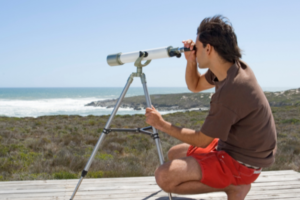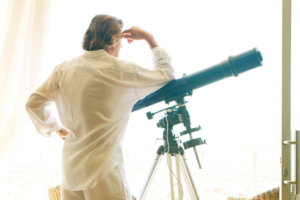Astronomy For Beginners; How To Get Started
If you’re keen to get into Astronomy, you’re participating in one of the oldest human traditions.
Countless wonders await you on any clear night. The first step in astronomy for beginners is simply to look up and ask, “What’s that?” Begin gazing at the stars from your backyard, and you’ll be taking the first step toward a lifetime of cosmic exploration and enjoyment.
Key Takeaways:
- Look up and observe the night sky with your naked eyes.
- Find a place with less light pollution and don’t look at bright lights at least 40 minutes before stargazing.
- The moon is a fantastic point to start with because you can see it regardless of light pollution.
- Look for the Big Dipper.
- Get a pair of binoculars before getting your first telescope.
- Get red flash light and a star chart.
But what, exactly, comes next? Too many newcomers to astronomy get lost in dead ends and quit in frustration. Astronomy for beginners shouldn be much more enjoyable than that.
Here is a step-by-step guide where you will learn about constellations, how to find planets and galaxies and all about choosing the best stargazing locations. We will also help you choose your first telescope too.
Look up and observe the night sky

The first thing that you need for stargazing is your eyes.
The most important thing you can do is get to the darkest place you can find where large swathes of sky are visible.
There are some bright objects in the sky at night – the Moon, some of the planets, and a few dozen stars – but the dimmer things greatly outnumber them, and artificial light washes these out.
Go out into the night and learn the starry names and patterns overhead or or buy yourself a planisphere, which shows the constellations visible at any time throughout the year.
Find A Place With Less Light Pollution
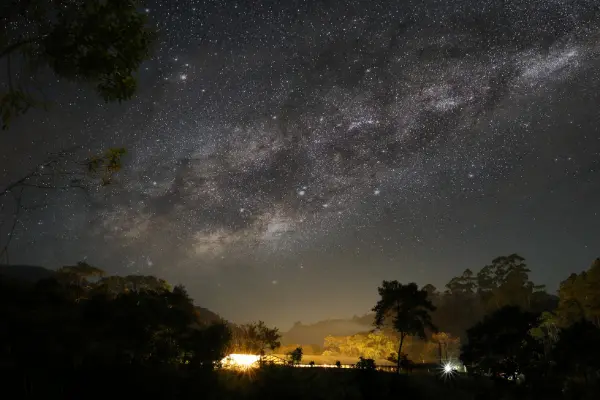
It takes your eyes up to 40 minutes to completely adjust to the darkness, so avoid looking at bright lights and, if it can’t be helped, consider wearing sunglasses before you start observing.
The best thing to do would be to get into camping! Stargazing and camping go very well together.
The further you get from cities and towns, the brighter the stars will be for you.
You don’t actually have to be all that far from the nearest light to see the night sky.
Just finding a place twenty or thirty miles from the nearest city will do.
A quick internet search should turn up local, state, and national parks near you. Those are going to be your best bet for finding a nice, dark spot from which to see the stars.
Start With The Moon
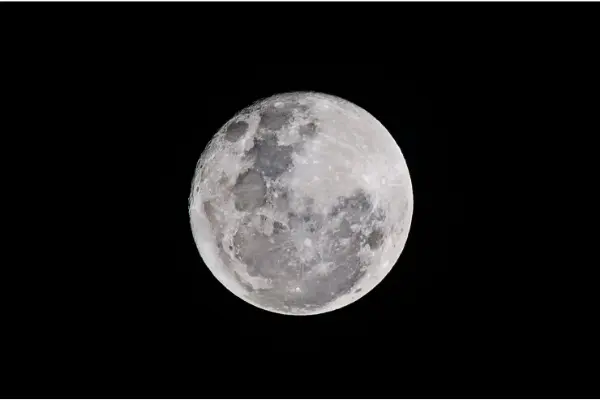
The moon is a fantastic point to start with because you can see it regardless of light pollution.
Not only that, but there is so much detail and nuance to learn about the Earth’s one natural satellite. So while you observe it, learn about how it formed, why it’s cratered, why we only ever see one side of it.
Also, the moon is great for getting into astronomy because you need absolutely no equipment to see it.
Related:
Look For “The Big Dipper”
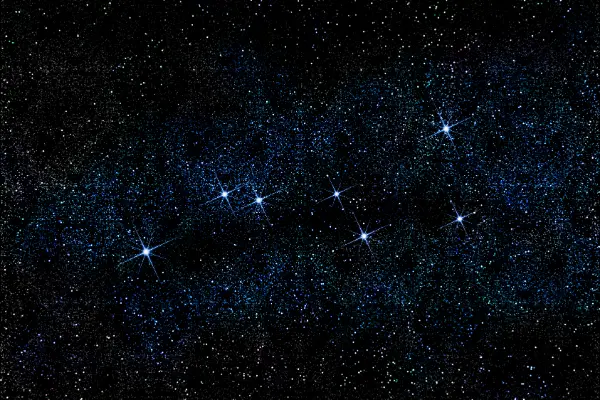
The night sky can be confusing. Random points of light appear on a dark background, and over a few hours these points will have changed position.
The sky seems different because Earth is rotating, but the patterns made by the stars stay the same relative to each other.
The Big Dipper is an asterism in the constellation Ursa Major (the Great Bear). One of the most familiar and easi;y recognizable star shapes in the northern sky, it is a useful navigation tool.
Asterisms are prominent groups of stars that form patterns but are smaller than, or even part of, a constellation.
They are usually easy to find because the stars are close to one another and about the same brightness. In this case, the Big Dipper has eight stars in it.
Seven are visible at a glance, while the eighth is a visible double star that is just detectable with the naked eye in an area with clear “seeing” and with good vision.
Your First Stargazing Equipment - How About A Pair Of Binoculars
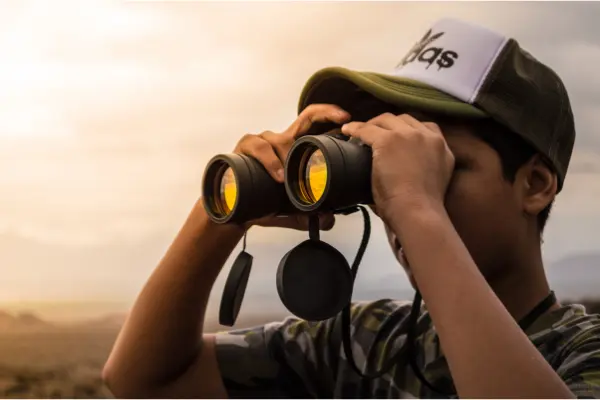
Binoculars make an ideal “first telescope” — for several reasons. They show you a wide field of view, making it easy to find your way around — whereas a higher-power telescope magnifies only a tiny, hard-to-locate bit of sky.
Binoculars show a view that’s right-side up and straight in front of you, making it easy to see where you’re pointing. (An astronomical telescope’s view, by contrast, is often upside down, is sometimes mirror-imaged as well, and is usually presented at right angles to the direction you’re aiming.)
Binoculars are also relatively cheap, widely available, and a breeze to carry and store. And their performance is surprisingly respectable.
Ordinary 7- to 10-power binoculars improve on the naked-eye view about as much as a good amateur telescope improves on the binoculars — for much less than half the price.
Get A Red Flashlight
If you need some kind of light so you don’t fumble in the darkness (or fall off a roof), get a flashlight with a red filter. Red light does not have the same effect on eyes as does blue or white light. You can create your own red flashlight by covering your cell phone with red cellophane or paper.
Click here to view a few options for night vision flashlights.
Use A Star Map
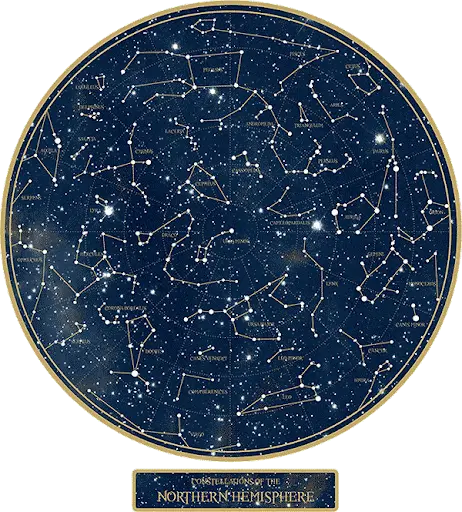
A simple star map should be enough, something that marks the constellations. There are usually up to 50 you can see from a given location with the naked eye on a clear night.
They’ll reveal dozens of star clusters, galaxies, and nebulae.
They’ll show the ever-changing positions of Jupiter’s moons and the crescent phases of Venus. You can identify dozens of craters, plains, and mountains on the Moon.
You can split scores of interesting double stars and follow the fadings and brightenings of numerous variable stars. If you know what to look for.
With a pair of binoculars you can add in a few hundred star clusters. There are tons of free maps which you can find with just a quick Google search too.
There are also plenty of astronomy based apps for smartphones. Just a few of these are Stellarium, StarWalk and Google Sky Map.
Astronomy For Beginners: Choosing Your First Telescope
Eventually it will be time for you to choose your first telescope. Make sure that you do not skimp on quality, stay away from the flimsy toy quality scopes. The telescope you want has two essentials. The first is a solid, steady, smoothly working mount. The second is high-quality optics.
You will obviously want a telescope with a large aperture, but don’t skimp on portability and convenience. Remember, the best telescope for astronomy for beginners is the one you’ll use most.
While telescopes come in many different forms, there are three general types to choose from. There are refractors, which collect light with lenses; reflectors, which use mirrors; and compound telescopes, which are hybrids of the two.
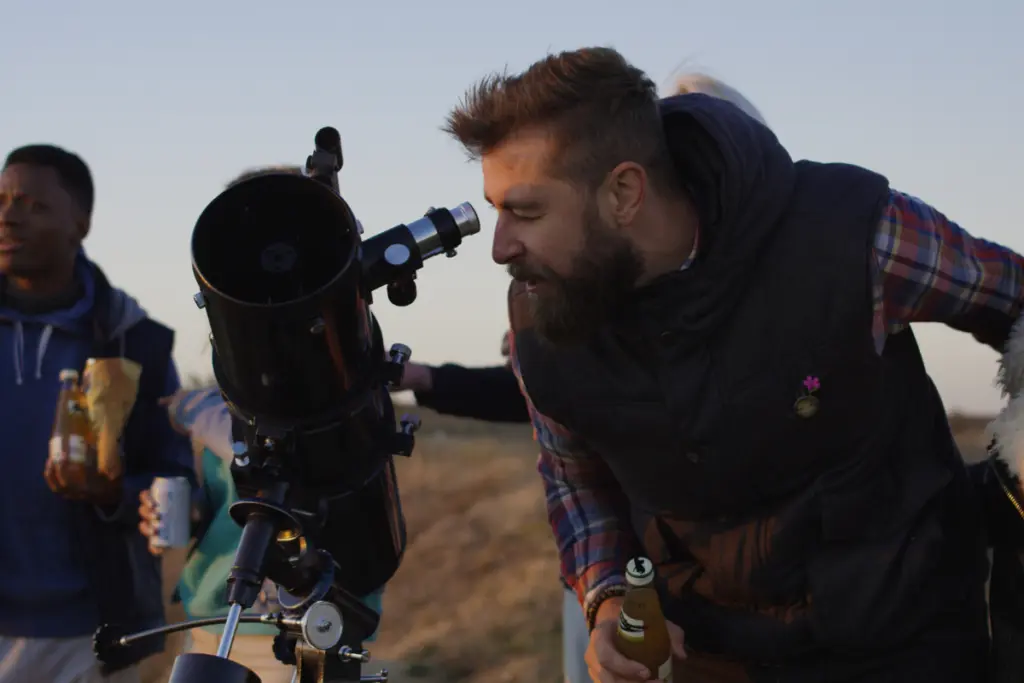
Many new telescopes have built-in computers and motors that can, in theory, point the scope to any celestial object at the push of a few buttons (after you do some initial setup and alignment). These “Go To” scopes are fun to use and can certainly help you locate sights you might otherwise overlook.
It’s true that telescopes can cost thousands of dollars, but some good ones can be had for only a few hundred. Can’t afford the scope you want? Save up until you can. More time using binoculars while building a telescope fund will be time you’ll never regret.
If you choose to start with a small but high-quality scope, it can serve as your traveling companion for a lifetime — whenever it’s impractical to bring along the big, more expensive scope that you will eventually buy as you grow and acquire more knowledge in the field of astronomy.
Look For Other Amateur Astronomers
A good way to learn the skies is with other people. You likely have an amateur astronomer’s club in your area. They will probably have three things: telescopes, experts who can tell you how to use them, and access to a local observatory.
Call or email a club near you, or check out its web site, and see when it holds meetings or nighttime observing sessions or star parties.
Keep Calm And Carry On
Putting a puzzle together requires careful observation, trial and error, and sometimes, waiting until the conditions are right to make a discovery.
The science of astronomy wasn’t assembled in a day or a year—it took great patience and many years of work by many astronomers to get to its current state, and there is much more to learn and discover about the wider universe in which we live.
Not everything will work the first time. You’ll hunt for some wonder in the depths and miss it, and hunt again, and miss it again.
This is normal. But eventually, with increasing knowledge, you will succeed.
ABOUT US
We are a team of active amateur astronomers, here to help you with all your astronomy and science related needs – this is anything, from reviewing the latest telescopes to be released to talking about gravity and neurons. The Big Bang Optics was started because of our love for astronomy and to help others like us find the best telescope and accessories.
LEGAL DISCLAIMER
The Big Bang Optics is a participant in the Amazon Services LLC Associates Program, an affiliate advertising program designed to provide a means for sites to earn advertising fees by advertising and linking to Amazon.com. The Big Bang Optics also participates in affiliate programs with Clickbank and other sites. The Big Bang Optics is compensated for referring traffic and business to these companies.


